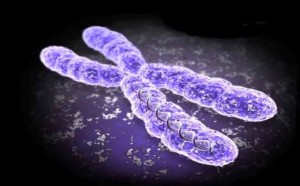Angelman Syndrome
Angelman syndrome is a congenital genetic disorder marked by developmental deficits and neurological problems like imbalance; speech problems; gait and walking issues; and seizures, etc. Most patients have a happy, affable, and excitable personality. They tend to exhibit unusual habits like regularly smiling and sporadic episodes of laughter.
Delays in development even 6 to 12 months after birth may prompt the parents to consult a doctor, which is when Angelman syndrome may be diagnosed. Seizures only begin when a child is 2 to 3 years old.
The life-expectancy of Angelman syndrome patients is the same as normal individuals. Patients may become less excitable and jittery as they grow older, but other associated symptoms tend to persist. Treatment involves the use of medications and therapies to control symptoms and prevent complications.
Angelman syndrome is marked by the occurrence of a host of distinctive signs and symptoms. A few common symptoms are listed below:
Angelman syndrome patients may suffer from a variety of health complications, a few of which are listed below:
As genetic defects cannot be corrected, Angelman syndrome has no known cure. Treatment involves alleviation of symptoms and preventing the onset of complications.
Angelman syndrome is not accompanied by many life-threatening complications. Hence, the life expectancy of patients is similar to that of normal healthy individuals. Therapies, medications, and proper care can help live a better quality of life with minimal or no dependency.



Angelman syndrome is a congenital genetic disorder marked by developmental deficits and neurological problems like imbalance; speech problems; gait and walking issues; and seizures, etc. Most patients have a happy, affable, and excitable personality. They tend to exhibit unusual habits like regularly smiling and sporadic episodes of laughter.
Delays in development even 6 to 12 months after birth may prompt the parents to consult a doctor, which is when Angelman syndrome may be diagnosed. Seizures only begin when a child is 2 to 3 years old.
The life-expectancy of Angelman syndrome patients is the same as normal individuals. Patients may become less excitable and jittery as they grow older, but other associated symptoms tend to persist. Treatment involves the use of medications and therapies to control symptoms and prevent complications.
Symptoms
Angelman syndrome is marked by the occurrence of a host of distinctive signs and symptoms. A few common symptoms are listed below:
- Delayed development, including delays in achievement of developmental milestones such as crawling, rolling over, sitting upright, or walking, etc. As compared to normal children, infants with Angelman syndrome may experience growth that is slower by 6 to 12 months.
- Absent or minimal speech. Speech impairment is quite profound. Babies may start babbling only after 6 to 12 months. Use of words is severely limited in infants.
- The head is flatter than normal at the back. It is the most noticeable physical abnormality associated with Angelman syndrome. The circumference of the head is normal at the time of birth, but the head grows slowly and by age 2, the small head size can be easily distinguished.
- Feeding problems are evident, particularly in 1 to 2 months old newborns.
- Seizures typically tend to occur in less than three years post birth.
- Ataxia, i.e., lack of muscle coordination, is present. It can pose problems in balancing, cause weakly walking on legs, and/or even hamper movements.
- The arms and legs may suffer from trembling; erratic, jerky, or stiff movements; and/or tremors. Affected children may stick or thrust out their tongues, flap their hands repeatedly like puppets, or walk with their hands help up high in the air.
- Delays in intellectual development.
- Crossed eyes
- Hyperactivity is also observed. Infants may display very high levels of energy all through the day, which may sometimes be impossible to control.
- Light pigmentation of the hair, skin, and eyes.
- Infants may regularly burst into laughter or have a smiley face for no obvious reasons.
- The teeth tend to be wide set or wide spaced.
- Infants with Angelman syndrome tend to have happy and excitable personalities.
- A short attention span and other attention problems are evident.
- Irregular patterns of sleep and waking, persistent drooling, constipation, and obesity, etc. may also be noticed. These symptoms are however not so common.
Angelman syndrome patients may suffer from a variety of health complications, a few of which are listed below:
- There is an increased risk towards development of spinal curvature anomalies such as scoliosis.
- Reduced or nil coordination between sucking and swallowing is what causes difficulties in feeding in some Angelman syndrome babies. This can then prevent them from growing normally, gaining weight, thriving, and flourishing.
- An amplified appetite can result in voracious eating, which can then pose increased threat to development of obesity.
- Hyperactivity is characterized by reduced attention capacities and concentration problems. Any object, situation, or surrounding may not hold the affected infants’ attention for long and they quickly move from one kind of activity to another. This can add to the underlying learning problems. Infants also tend to put their hands or toys in their mouths and keep it there. This can increase the risk to infections. Hyperactivity vanishes on its own as the children grow up.
- Varied sleep disorders such as deficient need for sleep or insomnia, irregular sleep-wake patterns, etc. are also seen in infants with Angelman syndrome. This can cause increased irritability and other problems. Sleep problems disappear on its own in some children, while therapies and medicines may be needed to correct it in other patients.
Causes of Angelman syndrome
- Angelman syndrome is a hereditary condition caused due to presence of errors in the UBE3A/ubiquitin-protein ligase E3A gene which occurs on chromosome 15.
- It is known that genes are passed on from the parents in pairs, wherein one copy is inherited from the father while the other is given by the mother. In most cases, both the copies of genes are active. However, only one copy of some genes are normally active. It is known that only the maternal copy of the UBE3A gene is active in the brain. Angelman syndrome occurs when this maternal copy develops certain errors or mutations, or goes missing. It may also occur when two copies of the inactive paternal UBE3A gene are passed onto the unborn baby, and none from the mother. Such errors can occur at random during formation of the maternal egg or paternal sperm, or during conception or fertilization. Subsequently, babies develop the characteristic neurological and development problems associated with the syndrome.
- Doctors are not aware of the exact causes/factors that trigger the genetic mutations. Most instances of Angelman syndrome occur in babies with no family history of the disease. However, the genetic defect may be passed on from a parent with Angelman syndrome to the child in some cases. Thus, babies born to parents with a family history of the syndrome are at increased risk to developing it.
Treatment
As genetic defects cannot be corrected, Angelman syndrome has no known cure. Treatment involves alleviation of symptoms and preventing the onset of complications.
- Fits are treated with anti-seizure drugs.
- Behavioral therapy can help overcome hyperactivity and associated problems; speech therapy that includes development of non-verbal forms of communication can alleviate speech problems; and physical therapy can help overcome walking and movement problems.
Angelman syndrome life expectancy
Angelman syndrome is not accompanied by many life-threatening complications. Hence, the life expectancy of patients is similar to that of normal healthy individuals. Therapies, medications, and proper care can help live a better quality of life with minimal or no dependency.
Pictures



No comments:
Post a Comment